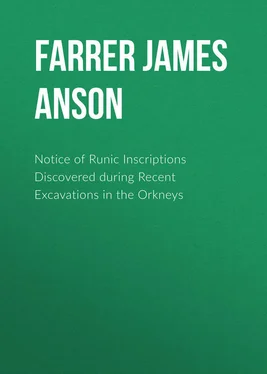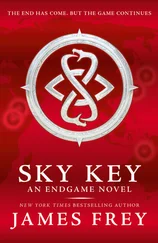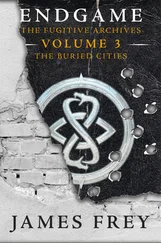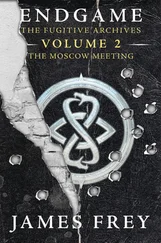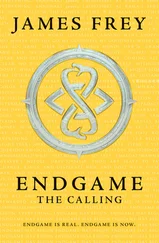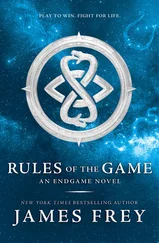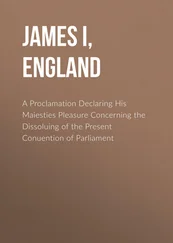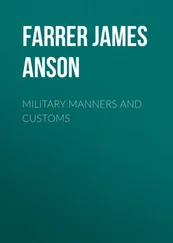James Farrer - Notice of Runic Inscriptions Discovered during Recent Excavations in the Orkneys
Здесь есть возможность читать онлайн «James Farrer - Notice of Runic Inscriptions Discovered during Recent Excavations in the Orkneys» — ознакомительный отрывок электронной книги совершенно бесплатно, а после прочтения отрывка купить полную версию. В некоторых случаях можно слушать аудио, скачать через торрент в формате fb2 и присутствует краткое содержание. Жанр: foreign_antique, foreign_prose, на английском языке. Описание произведения, (предисловие) а так же отзывы посетителей доступны на портале библиотеки ЛибКат.
- Название:Notice of Runic Inscriptions Discovered during Recent Excavations in the Orkneys
- Автор:
- Жанр:
- Год:неизвестен
- ISBN:нет данных
- Рейтинг книги:3 / 5. Голосов: 1
-
Избранное:Добавить в избранное
- Отзывы:
-
Ваша оценка:
- 60
- 1
- 2
- 3
- 4
- 5
Notice of Runic Inscriptions Discovered during Recent Excavations in the Orkneys: краткое содержание, описание и аннотация
Предлагаем к чтению аннотацию, описание, краткое содержание или предисловие (зависит от того, что написал сам автор книги «Notice of Runic Inscriptions Discovered during Recent Excavations in the Orkneys»). Если вы не нашли необходимую информацию о книге — напишите в комментариях, мы постараемся отыскать её.
Notice of Runic Inscriptions Discovered during Recent Excavations in the Orkneys — читать онлайн ознакомительный отрывок
Ниже представлен текст книги, разбитый по страницам. Система сохранения места последней прочитанной страницы, позволяет с удобством читать онлайн бесплатно книгу «Notice of Runic Inscriptions Discovered during Recent Excavations in the Orkneys», без необходимости каждый раз заново искать на чём Вы остановились. Поставьте закладку, и сможете в любой момент перейти на страницу, на которой закончили чтение.
Интервал:
Закладка:
James Farrer
Notice of Runic Inscriptions Discovered during Recent Excavations in the Orkneys
PREFACE
As the following pages are intended only for private circulation among friends and acquaintances, and for presentation to those few Public Societies to whom such a subject may be interesting, it is hardly necessary to offer any apology for the many imperfections in the description of Maes-howe, which may doubtless be pointed out, and for the brief and cursory manner in which the subject is handled. I desire only to give a plain statement of facts, in the hope that attention may be drawn to this interesting discovery, and possibly some further impetus given to the elucidation of Runic literature. I have received from the learned professors, whose translations are given, much valuable information, of which, however, I can only partially avail myself, in consequence of my very imperfect acquaintance with Runology.
I may add, that every possible care has been taken to ensure accuracy in the drawings. These and the ground plans were made by Mr. Gibb of Aberdeen – of whose care and accuracy in the drawings of ancient monuments Mr. Stuart has spoken so strongly in his “Sculptured Stones of Scotland,” printed for the Spalding Club. The Runes were mostly drawn by my friend Mr. George Petrie of Kirkwall, and the drawings afterwards compared by Mr. Gibb with the originals in the building of Maes-Howe. Two separate sets of casts were made for me by Mr. Henry Laing of Edinburgh (one of which is now in the National Museum of the Antiquaries of Scotland, Edinburgh, and the other in the Museum of the Royal Northern Society of Antiquaries at Copenhagen.) Nothing could exceed the pains taken by Mr. Petrie and Mr. Gibb; and the drawings made by Mr. Gibb were on two occasions collated by him with the casts in Edinburgh, so that I have every reason to believe that they are as perfect representations of the original writings on the walls of Maes-Howe as can be hoped for, and not the less so that the gentlemen who made the drawings and collations were unacquainted with Runes. I have confined myself to the interpretations furnished by the three eminent northern antiquaries who have undertaken the task of deciphering these rude inscriptions, feeling assured that the high reputation which they enjoy is a sufficient guarantee for the accuracy of their translations. In concluding these few remarks I am anxious to bear testimony to the valuable assistance I have received from my friend Mr. John Stuart, Secretary of the Society of Antiquaries of Scotland, to whom in reality I am chiefly indebted for the discovery of Maes-Howe, since I owe to his urgent suggestion that the great circle of Stennes, and the tumuli around it, had not been sufficiently examined, the successful excavation of this ancient “howe.” It is also highly satisfactory to me to know that Mr. Balfour of Balfour and Trenabie, on whose property this interesting relic of antiquity is situated, has taken the necessary steps to ensure its preservation – a precaution, unfortunately, too often neglected under similar circumstances.
JAMES FARRER.Ingleborough, Yorkshire, June 1862.

MAES-HOWE
Early in the month of July 1861 I was enabled, by the kind permission of my friend David Balfour, Esq. of Balfour and Trenaby, to put in execution a scheme long contemplated, but from various circumstances unavoidably delayed, the excavation of some of the great tumuli in the neighbourhood of the Stones of Stennes, or Ring of Brogar. I had in the year 1854 partially explored one of considerable size on the east side of the great circle of stones, which stands on the west shore of the Loch of Harray. No discovery, however, of any importance was then made.
Some days were devoted to excavations close to Stennes, to which allusion will afterwards be made, but as several gentlemen of well-known antiquarian reputation from Edinburgh and Aberdeen were expected, and as I was desirous of having the benefit of their experience and advice, I determined at once to commence operations on the great tumulus of Maes-howe, the subject of this notice. My attention had been particularly called to this tumulus by Mr. Balfour, whose decided opinion that a careful examination might result in some important discovery, afforded me great encouragement, as I well knew that he had for many years taken considerable interest in Orkney antiquities, and his opinion that Maes-howe was a sepulchral chamber, appeared to be confirmed by local traditions. 1 1 The country people state that the building was formerly inhabited by a person named Hogboy, possessing great strength. Haugbuie, in Norse, signifies “the ghost of the tomb;” and Haugr, “tumulus.”
On the afternoon of Saturday the 6th of July, therefore, guided by the experience of Mr. George Petrie, and assisted by the professional knowledge of Mr. Wilson, road contractor, ground was broken on the west side of Maes-howe, and on the same evening, Mr. John Stuart and Mr. Joseph Robertson of Edinburgh, with Colonel Forbes Leslie of Rothie, and Mr. James Hay Chalmers of Aberdeen, arrived by the Prince Consort steamship. As it was anticipated that a couple of days would suffice to make a large opening in the tumulus, arrangements were made for meeting there on the 10th of July. Before proceeding with the description of what followed, it may not be out of place to give a short account of the Stones of Stennes, as described by Lieutenant Thomas in a work published by him in 1851: —
“The Great Circle of Stennes, or Ring of Brogar, is a deeply entrenched circular space containing almost two acres and a half of superficies, of which the diameter is 366 feet. Around the circumference of the area, but about thirteen feet within the trench, are the erect stones, standing at an average distance of eighteen feet apart. They are totally unhewn, and vary considerably in form and size. The highest stone was found to be 13-9 feet above the surface, and judging from some others which have fallen, it is sunk about eighteen inches in the ground. The smallest stone is less than six feet, but the average height is from eight to ten. The breadth varies from 2-6 to 7-9 feet, but the average may be stated at about 5 feet, and the thickness about 1 foot – all of the old red sandstone formation. The trench round the area is in good preservation. The edge of the bank is still sharply defined, as well as the two foot-banks or entrances, which are placed exactly opposite to each other. They have no relation to the true or magnetic meridian, but are parallel to the general direction of the neck of land on which the circle is placed. The trench is 29 feet in breadth, and about 6 in depth, and the entrances are formed by narrow earth-banks across the fosse. The surface of the enclosed area has an average inclination to the eastward. It is highest on the north-west quarter, and the extreme difference of level is estimated to be from 6 to 7 feet. The trench has the same inclination, and therefore could never be designed to hold water.”
The Excavation of Maes-Howe
On Monday the 8th of July, a number of men under the superintendance of Alexander Johnson, Mr. Wilson’s foreman – a most active and intelligent fellow – proceeded with the work that had been commenced on the previous Saturday, and before evening discovered a passage on the west side, which afterwards proved to be the entrance into the interior of the tumulus. This passage was covered over with large flag-stones, one of which having been with some difficulty upraised, we effected an entrance, but found a considerable accumulation of earth and stones, which was removed on the following day, and Mr. Wilson, after careful examination, in which his engineering experience was of the highest importance, agreed to my suggestion that the excavation should be proceeded with from the centre of the hillock.
Читать дальшеИнтервал:
Закладка:
Похожие книги на «Notice of Runic Inscriptions Discovered during Recent Excavations in the Orkneys»
Представляем Вашему вниманию похожие книги на «Notice of Runic Inscriptions Discovered during Recent Excavations in the Orkneys» списком для выбора. Мы отобрали схожую по названию и смыслу литературу в надежде предоставить читателям больше вариантов отыскать новые, интересные, ещё непрочитанные произведения.
Обсуждение, отзывы о книге «Notice of Runic Inscriptions Discovered during Recent Excavations in the Orkneys» и просто собственные мнения читателей. Оставьте ваши комментарии, напишите, что Вы думаете о произведении, его смысле или главных героях. Укажите что конкретно понравилось, а что нет, и почему Вы так считаете.
